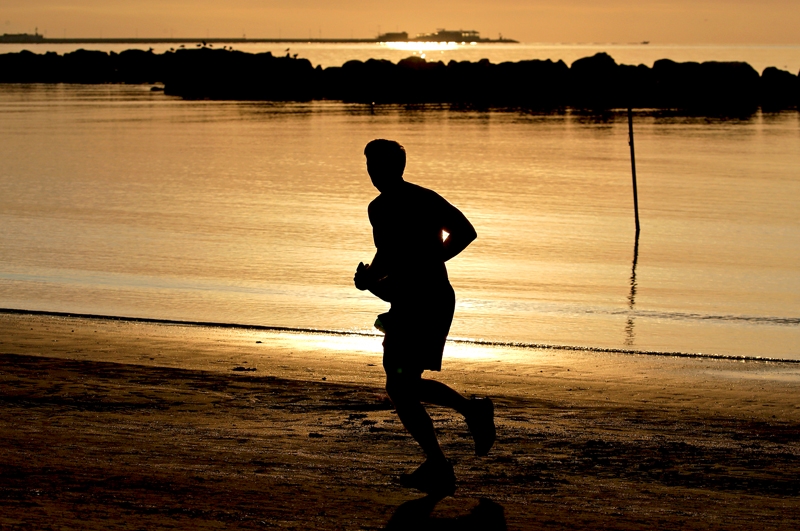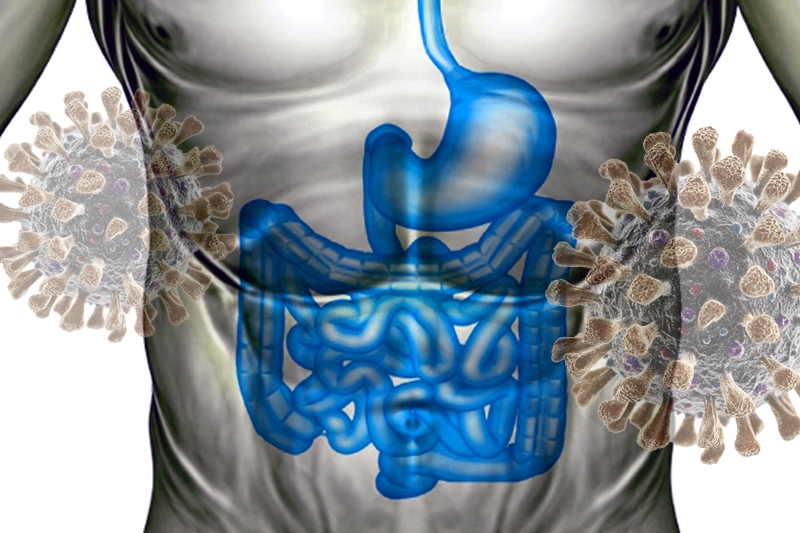Covid-19 recovery in athletes: all systems go

What kind of post-viral symptoms can athletes expect following a covid-19 infection and what are the implications for a return to sport?
As our understanding of covid-19 has evolved, it has become abundantly apparent that this is a virus that primarily affects the elderly (over 60-70 years of age), and particularly those with underlying serious health conditions, which have been shown to increase the risk of mortality by around 2.5 to 12-fold regardless of age(1). By contrast, fit and healthy individuals under the age of 60 years are largely only mildly affected or may not affected at all (is generally the case with children)(2). For example, the US Center for Disease Control data shows that in the 18-30 age group, the risks associated with covid-19 are 100 times less than in the 65-75 age group and 600 times less than in the over 85s age group(3).Post viral syndrome risks
Despite the very low risk of serious illness in covid-19, younger and fitter individuals can of course still contract the illness mildly, and like all viral infections, there exists the risk that post viral effects (often dubbed ‘long covid’) may be experienced. We know for example that post-viral fatigue and other complications (particularly neurological, leading to fatigue) are relatively common after viral infections such as seasonal influenza(4). It’s natural therefore to ask whether a similar post-viral risk exists for athletes following covid-19, even those who only experience mild illness. Apart from the potential impact on training capacity due to fatigue, it’s known that some viruses can result in temporary post-viral myocarditis (heart inflammation), which has been documented as a cause of sudden cardiac death in young competitive athletes(5).Recent research on athletes with a previous asymptomatic to mild covid-19 infection has looked for any markers or anomalies suggesting potential post-viral syndrome problems(6). The screening protocols involved laboratory tests, echocardiography and exercise test monitoring, and the good news is that in these athletes, no significant anomalies were observed. However, there are a number of other studies suggesting that the incidence of some form of myocarditis in young athletes after covid-19 infection may be more widespread than previously appreciated; these studies found anywhere from 0-15% of athletes may be affected in this way(7). In short, the evidence on the impact of covid-19 in athletes following infection remains poor, especially when it comes to exercise performance.
New research
To try and shed more light on any potential risks for athletes following a covid-19 infection, newly published research in the Journal of Clinical Medicine has investigated the post-viral effects in a cohort of competitive athletes, including spirometry (lung function) and echocardiography (heart function) findings and cardiorespiratory performance during exercise(8). Twenty four competitive athletes (soccer players) who had experience a covid-19 infection were recruited. All athletes had to meet the following criteria:- Age between 18 years and35 years.
- Positive PCR test prior to confirm the presence of infection followed by a negative test to confirm infection no longer present.
The findings
The most frequent symptoms during active infection were anosmia (loss of or alteration of smell) in 70% of the subjects. The next most common symptoms were muscle pain, fatigue and loss/alteration of taste, which affected around 65% of the athletes. Less common symptoms included fever, cough and rhinitis (blocked nasal passages) in around half of the athletes. Sore throats, headaches, shortness of breath and diarrhea meanwhile were less common, being present in less than a quarter of the athletes. Symptoms typically lasted 2-5 days although two athletes remained completely asymptomatic throughout.When it came to the symptoms that persisted after infection, the most frequent were anosmia in 45% of the athletes and loss of/altered taste in a third of the athletes. Meanwhile, a fifth of the athletes reported rhinitis, 17% a sporadic cough and two athletes reported persistent muscle pain. Interestingly, only a fifth of the athlete suffered no persistent symptoms following infection. Figure 1 below shows the incidence of acute and persistent symptoms in athletes who had covid-19 infection.
Figure 1: Prevalence of acute vs. persistent symptoms

Red = acute; blue = persisting symptoms
Impacts on performance
Despite the persistence of some symptoms, when the researchers compared the athletes who had suffered a covid-19 infection to those that hadn’t, the results were reassuring. Clinical examinations, electrocardiograms and echocardiography to look at heart structure did not show any significant abnormalities in the covid-19 infected athletes. Moreover, the maximum oxygen uptake levels reached 100% of what was expected, showing no issues with the intake, transport and deliver of oxygen to muscles during exercise (a fundamental measure of cardiovascular function). Two players had mild and harmless occasional ventricular heart beat arrhythmias but these had noted in the players’ medical histories, before covid infection occurred.The only significant physiological change was a slight reduction in FEV1 in 25% of the athletes. FEV1 is an acronym for ‘forced expiratory volume in 1 second’. It’s a measurement that’s taken during a spirometry test, and indicates how much air can be forced out of the lungs in one second. Where lung function has been compromised - eg after a respiratory infection or chronic pathological condition such as lung disease - FEV1 will drop. However, the slight reduction in FEV1 as mentioned above had no impact on exercise performance.
Implications for athletes
What do these findings mean for athletes following a covid-19 infection? Well, despite the talk of ‘long covid’ these results are encouraging. Although some symptoms persisted after the acute phase of the infection, they did not result in reduced exercise capacity. In addition, lung and cardiovascular (heart) function were not found to be impaired in any meaningful way, which is good news for athletes looking to a full return to training and competition – particularly when it comes to the risk of myocarditis. And while this was a relatively small sample size of athletes, the results are consistent with earlier research, which found a very low prevalence of myocarditis following infection in young competitive athletes, and no adverse events when training was resumed(9).In terms of practical advice for athletes and coaches, it seems that we can treat covid-19 like most other viral infections (eg influenza) when considering return to play. Once the athlete feels well, there are no significant indications against a gradual return to training. However, as with all viral infections, the emphasis should be on a gradual return. Close monitoring of subjective feelings is essential during any post-viral period. A workout or training session that leaves the athlete feeling unduly fatigued should not be ignored - it is a sign that training intensity and/or frequency should be immediately reduced. If such fatigue occurs, athletes should take an immediate rest period for 2-3 days or until they feel fully rested. Training should then be reintroduced at a lower intensity level and with a more gradual build up!
References
- BMC Infect Dis. 2021; 21: 663
- Starekova et al JAMA Cardiol. 2021 Jan 14
- ‘Risk for COVID-19 Infection, Hospitalization, and Death By Age Group’ - www.cdc.gov/coronavirus/2019-ncov/covid-data/investigations-discovery/hospitalization-death-by-age.html
- Psychiatry Clin Neurosci . 1997 Aug;51(4):181-4
- Peterson et al Br J Sports Med. 2020 Nov 12
- Br J Sports Med. 2021 Jan; 55(1):54-61
- JAMA Cardiol. 2021;27 doi: 10.1001/jamacardio.2021.2079
- J Clin Med. 2021 Jul; 10(14): 3053
- Circulation. 2021 Jul 27; 144(4):256-266
You need to be logged in to continue reading.
Please register for limited access or take a 30-day risk-free trial of Sports Performance Bulletin to experience the full benefits of a subscription. TAKE A RISK-FREE TRIAL
TAKE A RISK-FREE TRIAL
Newsletter Sign Up
Testimonials
Dr. Alexandra Fandetti-Robin, Back & Body Chiropractic
Elspeth Cowell MSCh DpodM SRCh HCPC reg
William Hunter, Nuffield Health
Newsletter Sign Up
Coaches Testimonials
Dr. Alexandra Fandetti-Robin, Back & Body Chiropractic
Elspeth Cowell MSCh DpodM SRCh HCPC reg
William Hunter, Nuffield Health
Keep up with latest sports science research and apply it to maximize performance
Today you have the chance to join a group of athletes, and sports coaches/trainers who all have something special in common...
They use the latest research to improve performance for themselves and their clients - both athletes and sports teams - with help from global specialists in the fields of sports science, sports medicine and sports psychology.
They do this by reading Sports Performance Bulletin, an easy-to-digest but serious-minded journal dedicated to high performance sports. SPB offers a wealth of information and insight into the latest research, in an easily-accessible and understood format, along with a wealth of practical recommendations.
*includes 3 coaching manuals
Get Inspired
All the latest techniques and approaches
Sports Performance Bulletin helps dedicated endurance athletes improve their performance. Sense-checking the latest sports science research, and sourcing evidence and case studies to support findings, Sports Performance Bulletin turns proven insights into easily digestible practical advice. Supporting athletes, coaches and professionals who wish to ensure their guidance and programmes are kept right up to date and based on credible science.









